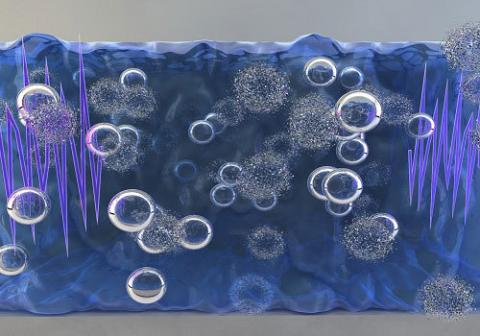Columbia team aims to double perovskite PV efficiency
A team of scientists at Columbia University has discovered the possibility of greatly boosting the efficiency of hybrid organic inorganic perovskite (HOIP) solar cells.
The team showed how HOIPs have a far lower rate of energy loss than silicon cells, making it possible for the harvesting of excess electronic energy to increase the efficiency of solar cells. The recent Columbia study has actually found that it's possible to make HOIP-based solar cells even more efficient than anyone thought possible.


